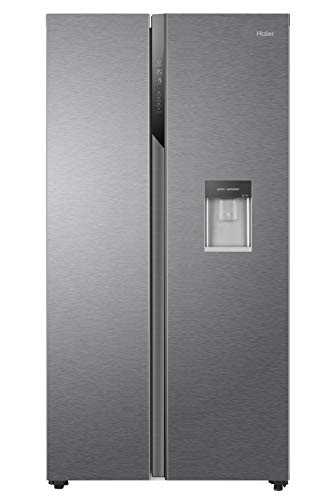How To Explain Fridge UK To A Five-Year-Old

The Comprehensive Guide to Refrigerators in the UK
Refrigerators are an essential device in every household, serving an important role in food conservation and security. The UK market provides a diverse range of fridge types, sizes, functions, and brands. Latoyia Schlecht aims to supply a thorough understanding of refrigerators readily available in the UK, including their features, energy efficiency, and factors to consider when making a purchase.
Kinds Of Refrigerators Available in the UK
When looking for a refrigerator, it is essential to comprehend the numerous types offered. Each type comes with its own set of features and functions, catering to various requirements and choices. The most typical kinds of fridges found in the UK consist of:
1. Top Freezer Refrigerators
- Description: The traditional style, featuring the freezer compartment on top.
- Pros: More inexpensive, spacious, easy access to fresh food.
- Cons: Limited freezer area, the top may be less practical for bulk items.
2. Bottom Freezer Refrigerators
- Description: Freezer is situated at the bottom, permitting easier access to fresh food.
- Pros: Greater convenience, much better exposure of fresh products.
- Cons: Usually more costly, some might fight with big frozen items.
3. Side-by-Side Refrigerators
- Description: Features 2 vertical compartments, one for the fridge and one for the freezer.
- Pros: Ample storage space, simple to access both frozen and fresh foods.
- Cons: Wider footprint, they might not fit in smaller cooking areas.
4. French Door Refrigerators
- Description: Combines functions of bottom freezers and side-by-sides, with two doors for the fridge on top.
- Pros: Stylish style, large, and often consists of sophisticated functions.
- Cons: Higher rate point, aligns badly with smaller sized kitchen layouts.
5. Compact Refrigerators
- Description: Smaller designs designed for limited areas.
- Pros: Ideal for studio apartments or offices, energy-efficient.
- Cons: Limited storage capacity, might do not have features.
6. Integrated Refrigerators
- Description: Designed to blend effortlessly with kitchen area cabinetry.
- Pros: Custom fit, visual appeal, increases home value.
- Cons: Higher expense, might provide less versatility in placement.
7. Smart Refrigerators
- Description: Equipped with Wi-Fi and smart innovation functions.
- Pros: Advanced includes like touch screens and internal video cameras.
- Cons: Expensive, more complicated to repair.
| Refrigerator Type | Accessibility | Typical Price Range | Energy Efficiency |
|---|---|---|---|
| Top Freezer | Moderate | ₤ 300 - ₤ 600 | Typical |
| Bottom Freezer | High | ₤ 400 - ₤ 800 | Above Average |
| Side-by-Side | Easy | ₤ 800 - ₤ 1500 | Varies |
| French Door | High | ₤ 800 - ₤ 2000 | High |
| Compact | Limited | ₤ 200 - ₤ 500 | Average |
| Integrated | Custom-made | ₤ 1000 - ₤ 2500 | High |
| Smart | Variable | ₤ 1200+ | High |
Secret Features to Consider
- Energy Efficiency: Look for designs that are energy-efficient. In the UK, devices are rated from A (most effective) to G (least effective). An A+ score and above can lead to considerable energy savings.
- Capacity: Choose a fridge with adequate capacity for your family. A basic guideline is 100-200 liters per individual.
- Sound Level: Consider models that operate silently, especially if the kitchen area is near living areas.
- Cooling Technology: Features like frost-free innovation are worth the investment, as they minimize maintenance.
- Adjustable Shelves: Having adjustable shelves enhances the versatility to keep larger products.
- Temperature Control: Check for easy-to-use temperature level controls and zones for different types of food.
- Design: Choose the design and color that matches your cooking area aesthetic, whether you prefer a modern stainless-steel appearance or a traditional retro finish.
Purchasing Tips
- Determine Your Needs: Consider your cooking practices, family size, and cooking area space.
- Set a Budget: Refrigerators been available in different cost varieties. Establish a budget plan before you begin going shopping.
- Research Energy Ratings: Invest in energy-efficient models to minimize utility bills.
- Check out Reviews: User experiences can provide insights into dependability and efficiency.
- Compare Brands: Some brand names are known for their toughness while others might use more innovative features.
Regularly Asked Questions (FAQs)
1. The length of time do refrigerators normally last?
- Refrigerators typically last in between 10 to 20 years, depending on the brand name and how well they are kept.
2. Are there any maintenance pointers for prolonging the life of a refrigerator?
- Routinely tidy the coils, inspect the door seals, and periodically defrost if needed to preserve optimum efficiency.
3. What is the very best size refrigerator for a household of 4?
- For a household of 4, a refrigerator with a capability of around 400-600 liters is generally sufficient.
4. Do I require to stress over energy intake when purchasing a refrigerator?
- Yes, energy consumption is essential. Look for units with high energy effectiveness rankings to minimize monthly expenses.
5. Should I choose a fridge with a water and ice dispenser?
- This feature can be convenient, especially for households. Nevertheless, it may need more upkeep than basic models.
Getting a refrigerator is a significant decision for any household in the UK. With various types readily available, each with its unique functions and benefits, it is crucial to evaluate individual requirements before choosing. By thinking about elements such as energy effectiveness, capability, and style looks, consumers can select a fridge that lines up well with their lifestyle, ultimately improving their kitchen area experience while protecting food quality and freshness.

